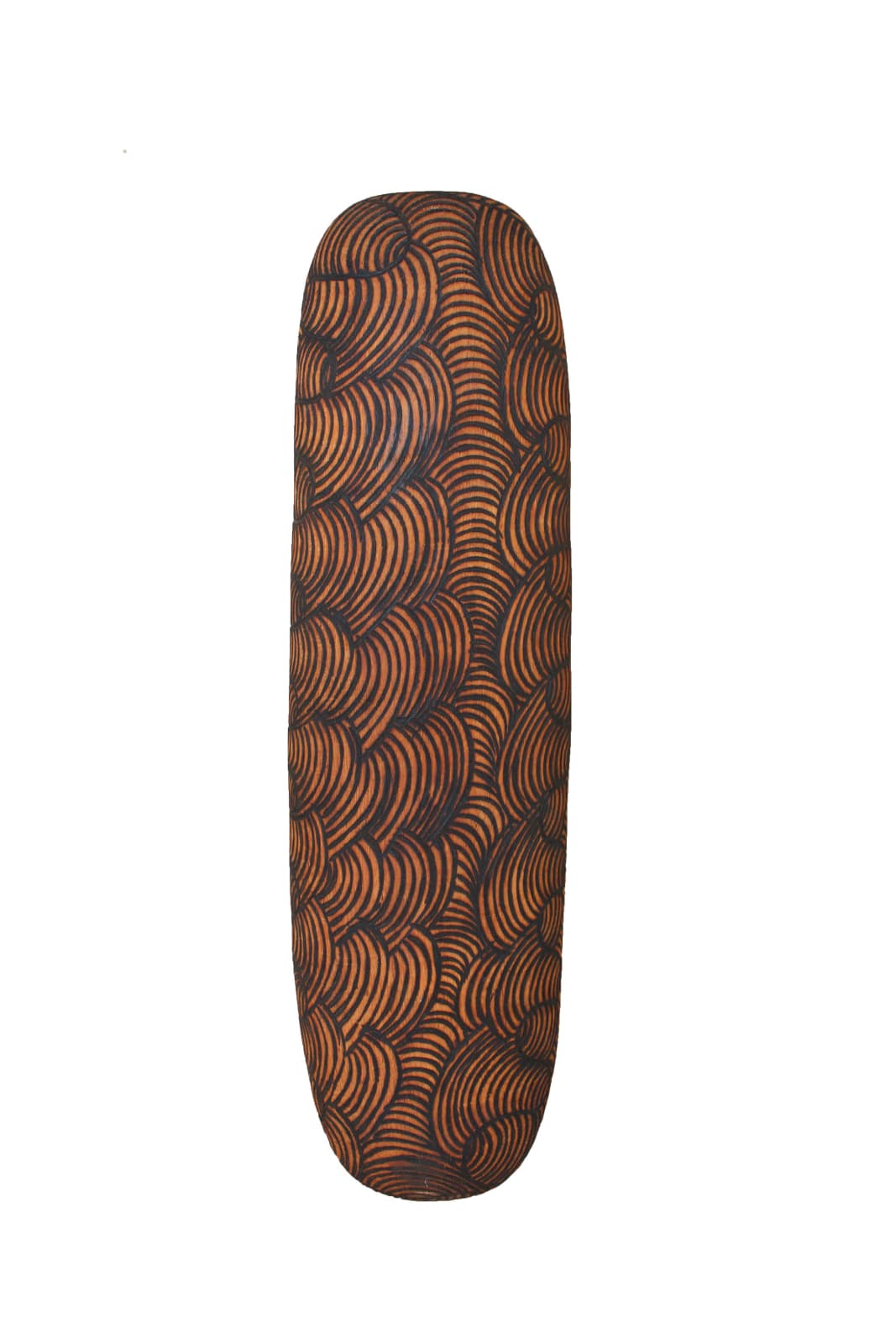Lulu Cooley Pitjantjatjara, b. 1953
2 1/2 x 20 1/4 x 5 3/4 in
The piti or wooden bowl is a woman’s traditional carrying vessel for food and water. Together with a wana or mulga wood digging stick and a wira, a smaller version of the piti used to scoop soil or ladle water, it was used by women hunting for witchetty grubs, honey ants or small burrowing animals and their eggs. After loosening the soil with a wana it was shovelled aside from the hole with the wira and the bounty carried home in the piti. (Nowadays a crow bar, a short handled shovel and a billy can are the women’s hunting tools). The piti was also used for carrying an immense variety of other desert seeds and fruits. A manguri or head-ring, was used to cushion the bowl as the women carried it on their heads to collect food and water. It is made of spun hair and emu feathers or coiled grasses.
As most contemporary Maruku artists use walka, patterns burnt into the wood with wire heated on a wood fire to relate Tjukurpa, stories about the Tjukuritja or Creation Ancestors and the activities which shaped the land, the people and their Law, this bowl is an increasingly rare example of women’s work.
Dianne has also used kiti, a bush glue made from spinifex resin, to reinforce her bowl.
SIGN UP TO OUR MAILING LIST FOR ALL THE NEWS
* denotes required fields
We will process the personal data you have supplied in accordance with our privacy policy (available on request). You can unsubscribe or change your preferences at any time by clicking the link in our emails.





